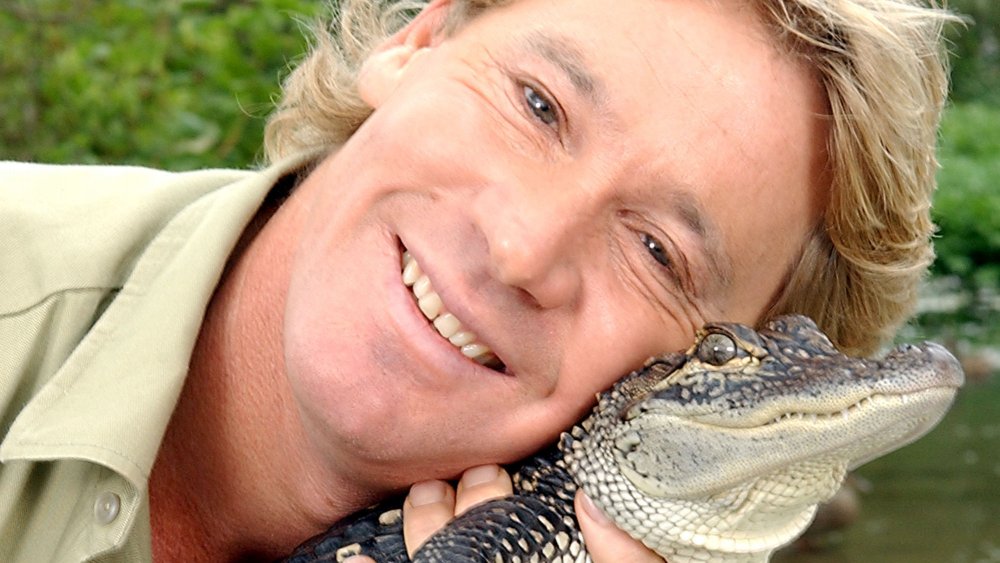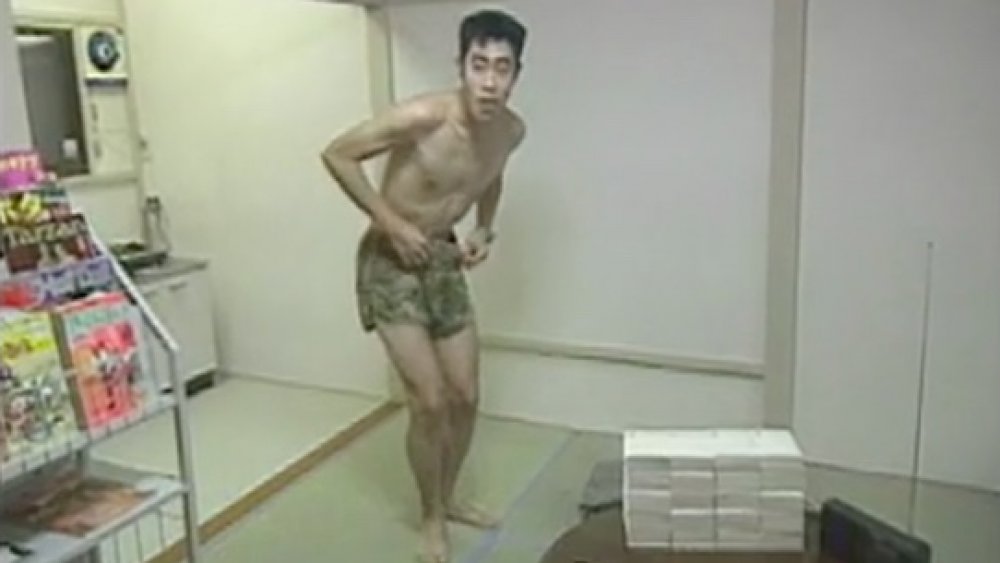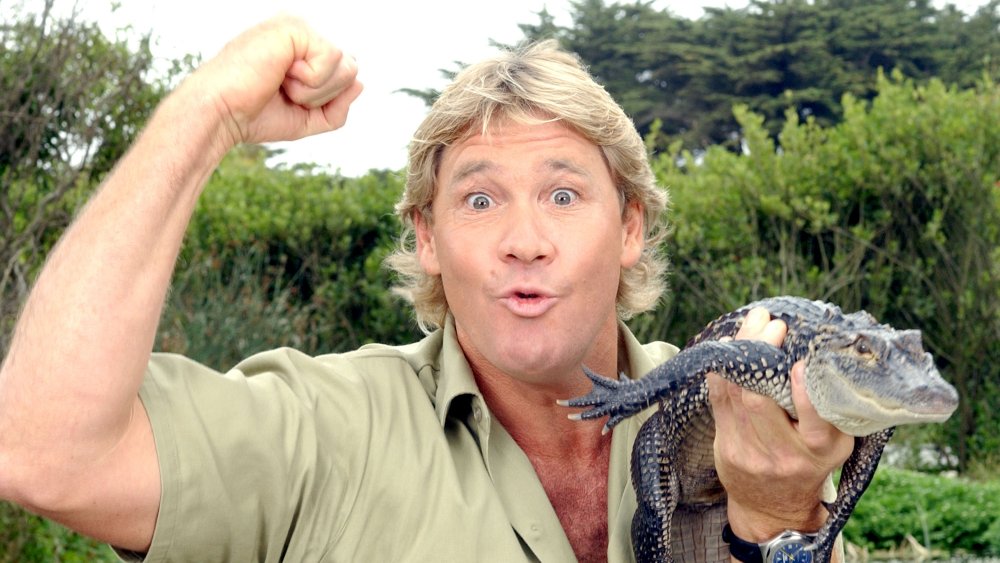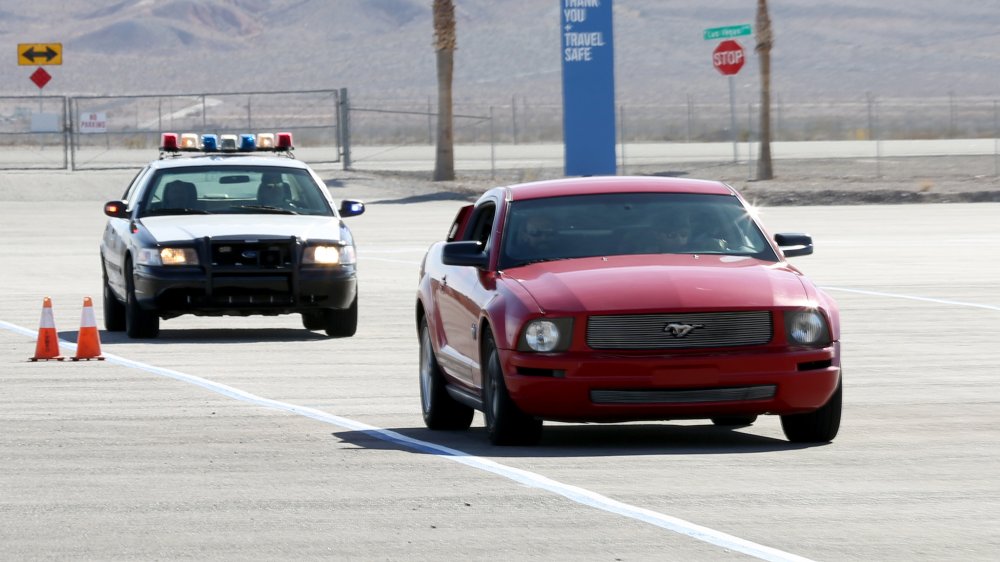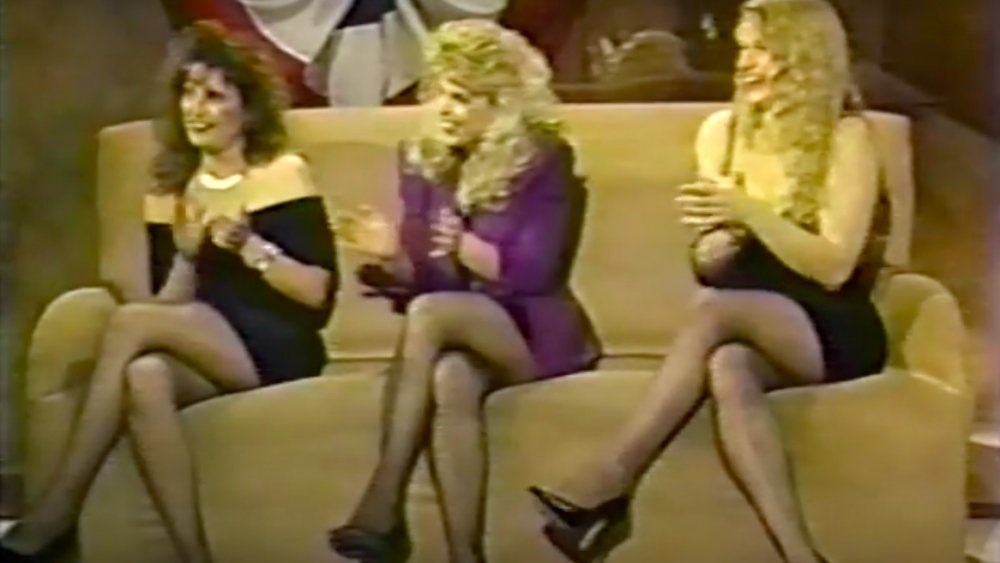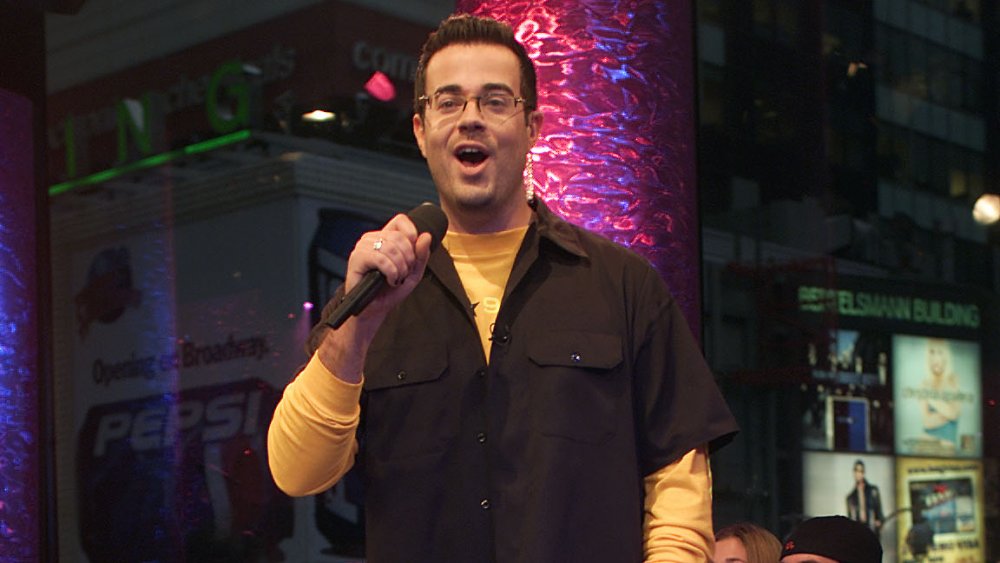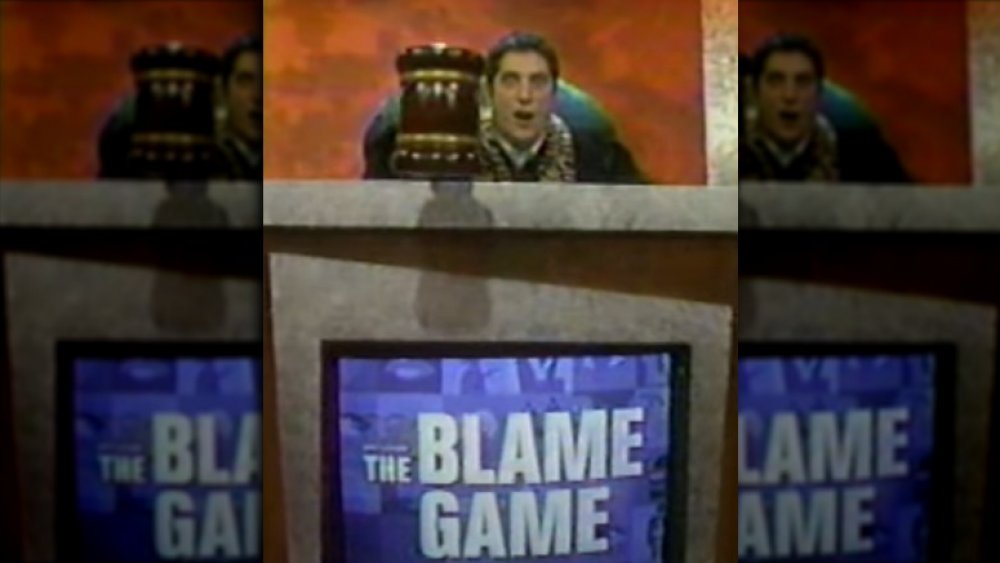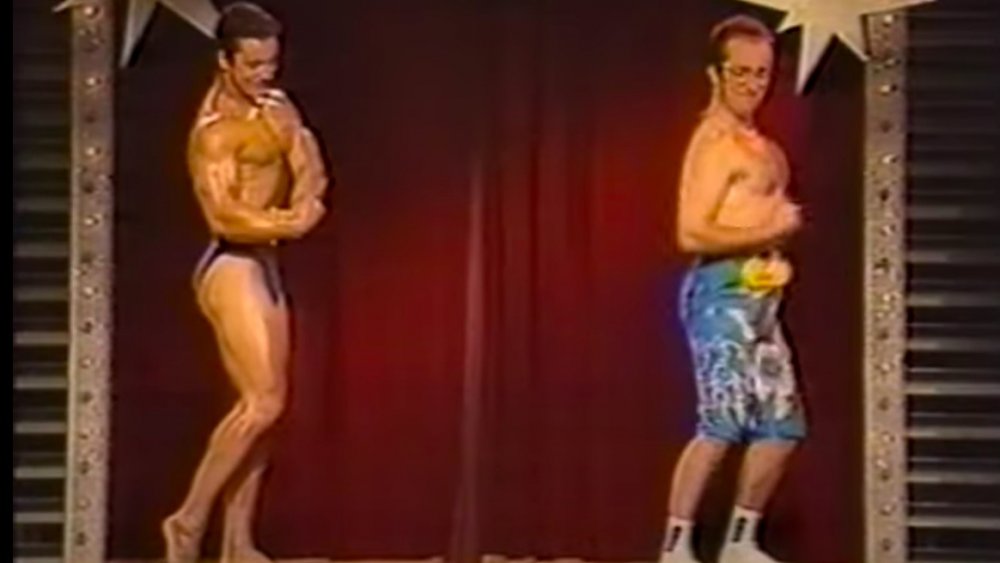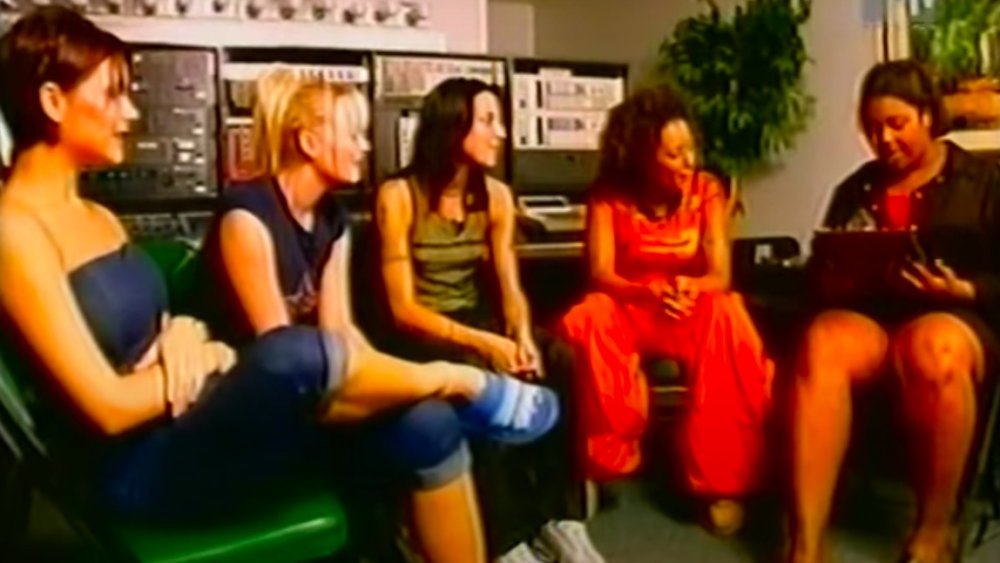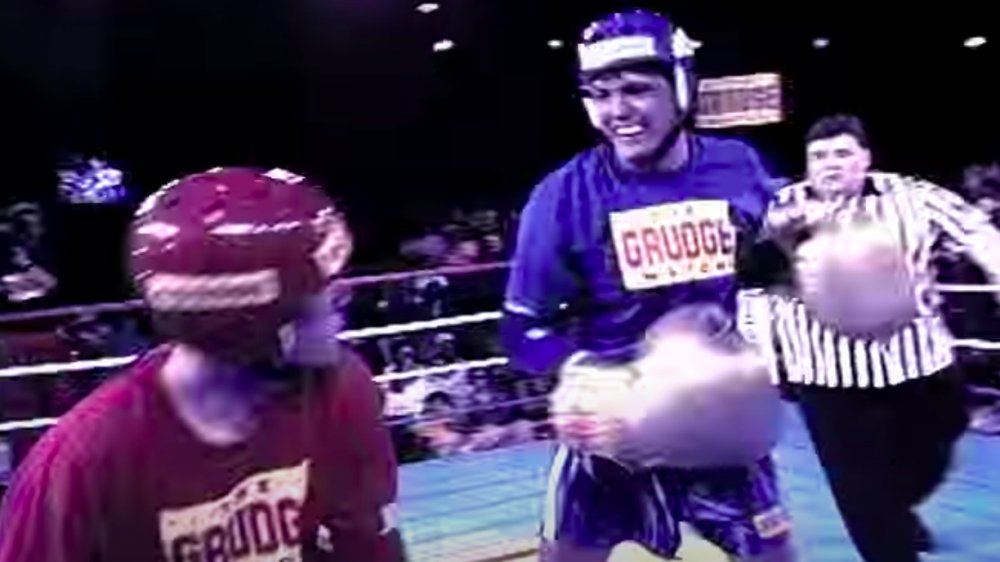90s Reality Shows That Would Never Get Made Today
The 1990s were a different time for reality shows, the Wild West years before the format became perfected in the early 2000s. Survivor first aired in 2000 and Fear Factor premiered in 2001, with The Bachelor following in 2002, the three shows among the many that helped pioneer the decades of reality TV that followed. In the 90s, though, TV networks were still trying to figure out what worked.
While the 2000s saw plenty of reality shows that probably never should've aired — The Swan, Bridezillas, Boy Meets Boy, and Who Wants To Marry A Multi-Millionaire? among them — the craziest reality shows of the 90s were special. Between the insane programming that aired in other countries, the clunky U.S. shows that came across as dangerous or hopelessly politically incorrect as time passed, and the concepts that grew stale as technology changed, many eyebrow-raising reality shows were greenlit over the course of the decade, a good number of which have all but disappeared from the internet. Thankfully for TV nostalgics, there's still evidence of many of the 1990s' wackiest reality shows, the likes of which will never be seen on screens again. Read on for 90s reality shows that would never make it to air today.
The horrifying stunts of Susunu! Denpa Shōnen
Susunu! Denpa Shōnen was a notoriously-shocking Japanese program that premiered in 1998. Blending the game show and reality show formats with shocking setups for its contestants involving nudity, humiliation, and near-physical harm, Susunu! Denpa Shōnen was like no other show that came after it, and for a reason. According to Stuart Lenigs' The Bizarre World of Reality Television, show was famous for its extreme stunts, like stranding contestants on an island and forcing them to build a raft to paddle back to Japan. The duration of that stunt? Four months! Many other "challenges" included extended, grueling travel, like a DJ who had to "hitchhike from South Africa to Norway."
The most enduring episode, however, took a contestant, nicknamed Nasubi (above), and required him to live alone in secret locations, with no food, clothes, or contact with the outside world, living only off the items he could win by entering sweepstakes in magazines. According to This American Life, while in isolation, Nasubi recorded videotapes that he was told would air on TV, but what he didn't know was that he was also being filmed 24/7, with the footage airing for Susunu! Denpa Shōnen viewers. Nasubi didn't win toilet paper until 10 months into his captivity, and at one point was so hungry that he ate dog food. When he finally emerged, he was a celebrity in Japan, but, according to Lening, the country soon outlawed what the government called "torture-themed programming."
The Crocodile Hunter preceded a tragic death
In 1996, the world was introduced to Steve Irwin, the endearingly kooky Australian zoologist and host of The Crocodile Hunter. The groundbreaking 90s reality show featured Irwin getting up-close-and-personal with dangerous wildlife, wrangling crocodiles, alligators, snakes and more. While other reality shows in the decades following the premiere of The Crocodile Hunter have featured wild animals and their fearless handlers, Irwin's fearless hands-on style has remained singular on TV, potentially because it led to his death.
Irwin tragically died in 2006 at the age of 44, after suffering a stingray attack while filming footage for a documentary called Ocean's Deadliest at the Great Barrier Reef. His death served as an unfortunate example of how reality television often downplays the danger of on-screen stunts, Keith Semmel, a Cumberland College communications professor, told the Christian Science Monitor in 2006. "Probably, a lot of people think of the Crocodile Hunter as fictional, a sort of mythical character not permitted to die in real life," Thompson said about Irwin's passing, adding, "It has a little bit to do with our inability to see the difference between reality and fictional programming."
The Intercept featured real car chases
Perhaps only in Russia could one of 1990s' craziest reality shows get made. The Intercept, which premiered in Russia in 1997, featured contestants who "stole" cars and evaded police capture, getting to keep the car they stole if they successfully escaped from authorities. Producers gave contestants or "hijakers" the keys to cars — no, they didn't have to break in — and released them onto the streets of Moscow. According to the blog I'm A Useless Info Junkie, the cars were equipped with tracking equipment that allowed police to see their location, and contestants engaged in what were essentially car chases across Moscow, attempting to evade authorities (who participated in the show as the "hunters" of the "hijakers") for two rounds and a total of 35 mins. The show's second season reportedly upped the ante by giving contestants cars to drive that had almost-empty fuel tanks, as well as radios that allowed them to eavesdrop on the police.
In a 1998 interview (via Lifehacker), the show's producer revealed that he intended The Intercept to portray traffic police in a better light, claiming that "most (Moscow residents) think of the (traffic cops) as drunken, corrupt pigs," when "in reality, their life is very hard, trying to survive on $150 a month." As for prizes, if The Intercept contestants successfully outraced police, while also "obey[ing] all the traffic laws," they could keep the car they drove on the show.
The sexual innuendos of Studs
Plenty of dating shows have been made in the past few decades, but Studs was uniquely raunchy at the time of its release. Premiering in the U.S. in 1991, Studs invited two men to go on blind dates with three women, and then taped the five contestants talking about the dates and their aftermath. As described by Entertainment Weekly in a 1992 article, "If, for example, a couple plays billiards together, the way it comes out on Studs is: 'One tight rack and it was time to start breaking balls.'" But the cheesy innuendo couldn't rescue Studs' outdated, dry format, with the male and female contestants stuck sitting on beige couches recounting their dates.
There's also the fact that some of the male hopefuls on Studs were apparently disappointed in the show's perceived ability to turn a TV blind date into a real-life hookup. ”It's the comments from the women they put on that screen that make everyone believe all the contestants sleep with each other, but it's not true," one male contestant lamented about Studs to the Chicago Sun-Times. Psychologist Art Luz told the same outlet that the show plays on familiar gender norms. 'Shows like Studs ... are another attempt to excite and titillate,” Luz said, adding, ”I would guess that they perpetuate myths about sexual functioning in the male and female gender, the myths that say men are responsible for what happens sexually and that their prowess is measured by how big their biceps are.”
Wanna Be A VJ? was a retro trip
Remember VJs? The 90s concept of video jockeys made MTV personalities like Carson Daly and Daisy Fuentes popular names in entertainment, and the MTV program Total Request Live, hosted by Daly, was a cultural juggernaut. Wanna Be a VJ? was relevant at the time, but now, the 1998 reality show's concept seems hopelessly outdated. The show pitted contestants against each other to win what, at the time, was a huge prize, a chance to appear on MTV to show off their video-jockeying skills. According to The Village Voice, "4000 aspiring VJs" submitted to appear on the show's first season, and in another hilariously 90s detail, the voting for Wanna Be a VJ? was hacked by a teenager who tried to rig the fan-voted contest so his favorite contestant, Jesse Camp, would win.
Camp, who showed off his bizarre personality on-air with MTV, made headlines many years later with a series of concerning incidents. In 2016, New York Post reporters caught him in front of the publication's building, where he claimed he was "on a very bad acid trip." In a scary incident in 2018, Camp's sister reported him missing, but the former media personality was later found safe.
The icky premise of Street Match
Approaching women on the street and asking them out has always been a risky proposition, and in recent years, with the rise of the Me Too movement, the idea of targeting women based on their looks has become even more of a societal no-no. Street Match, on the other hand, gave subjects the chance to point out hot strangers on the sidewalk and, with a camera crew in tow, try to take them on a date.
The voyeuristic reality show, which premiered in the U.S. in 1993, showed cameras following the host as he found a male participant on the streets, and then helped him find an attractive female stranger to go on a date with him. While some critics actually gave the show a nod, like The Baltimore Sun's David Zurawik, who called it "fascinating," others weren't so kind. Variety, for example, called Street Match "almost painful to watch," and described the show's premise as "(playing) on people's fantasy that they could walk down the street, see someone attractive and then ask them out — though in reality (especially in New York), a blast from a can of mace would be the more likely response to such advances." Ouch.
The Blame Game was a couples' courtroom
A baffling concept for a reality show, The Blame Game asked broken-up couples to argue that their relationships' demise was their ex's fault. The show, which premiered on MTV in 1999, combined game show and courtroom show formats as each ex pleaded their case to a "judge" played by an actor. The Blame Game's challenges involved the couples spilling one another's embarrassing secrets, being cross-examined by "counselors" (also played by actors) and, in the strangest aspect of the show, singing karaoke. At the end of each episode, the studio audience voted on which ex they believed was most responsible for the breakup.
Another twist came after the shows ended, with the loser's "mugshot" appearing in a recurring Entertainment Weekly feature, under the heading "Do Not Date This Blame Game Loser." The winner, on the other hand, won an exotic vacation, a much more enviable outcome. Running for 130 episodes, The Blame Game must have been captivating to at least a few viewers. And MTV must have been feeling nostalgic about the show, announcing that the network was bringing The Blame Game reruns back on-air in 2018.
Man O Man was pure male objectification
A show with few goals other than shameless objectification, Man O Man put men, not women, in the crosshairs for a humiliation-filled competition, mostly based on their looks. Man O Man, which aired as a special in the U.S. in 1995, had international versions that aired around the world through the 90s. The show's wild premise involved lining up men in front of an audience of women, who voted on male contestants' attractiveness as they participated in borderline-humiliating challenges, including posing in swimsuits next to bodybuilders, with losers getting pushed into a pool.
"The premise was about turning the tables on traditional female beauty pageants in a somewhat absurd way," Karen Greene, executive producer of the Australian Man O Man reminisced about the show with News.com.au in 2015. "There was a dance round, questions from the audience, a karaoke round along with other various improv acting challenges and the final was generally having to pose next to a professional bodybuilder," she said. Greene also divulged how producers elicited such enthusiastic reactions from the women in the audience. "We provided each table of four with one bottle of (champagne)," she recalled.
Fanatic — the most awkward celebs-meet-fans show ever
The premise of MTV's FANatic sounded promising; the reality show offered music fans the chance to meet their icons. In practice, the show, which premiered in 1998, had a dry-as-cardboard format that wasted the major celebrity names who appeared on the show, including Madonna, NSYNC, Whitney Houston, George Clooney, Eminem, the Spice Girls, Christina Aguilera and more, according to TV Guide.
With all the connections MTV had to bring A-list talent to FANatic, the show completely squandered its star power with the show's premise. According to Variety, camera crews were shown surprising fans at their homes, at which point they would take them to meet their favorite celebrities. Instead of sending them on adventures or filming their activities together, the fans simply sat down with their idols and conducted an interview, a format that didn't always produce compelling TV. In fact, although the show ended in 2000 after just 33 episodes, social media critics were still bashing it online years after, with one Redditor uploading the Sarah Michelle Gellar video in 2015 and calling it "very painful to watch."
The Grudge Match let enemies duke it out
One of the goofier concepts of reality TV that aired in the 90s, The Grudge Match played out an enviable scenario, giving two aggrieved parties the chance to fight it out in a boxing ring. With the theme of "don't get mad, get even," the show premiered in 1991, with a production assistant summing up its lowbrow appeal to The New York Times as follows: "It may not be PBS, but it's a real hoot." Per The New York Times, one feuding duo who appeared on The Grudge Match consisted of two exes, who took out their aggression through a wedding-themed rumble, wearing veils and throwing cake and champagne. Other brawls gave contestants the chance to throw matzoh balls at each other, with fighting tools offered to The Grudge Match participants including baked beans, kitty litter, and rotten tomatoes. So fighters didn't get hurt, referees presided over the matches, and contestants were provided with giant gloves.
"I'm a very physical person, and this was a good way to release all the stress and tension that had built up between us," one participant told the Times about fighting her husband on the show. "It was definitely better than going to the gym. I was really mad in the first round, because he was laughing, but when I got him, it felt so good. I'm over it now, I'm not mad at him anymore."

